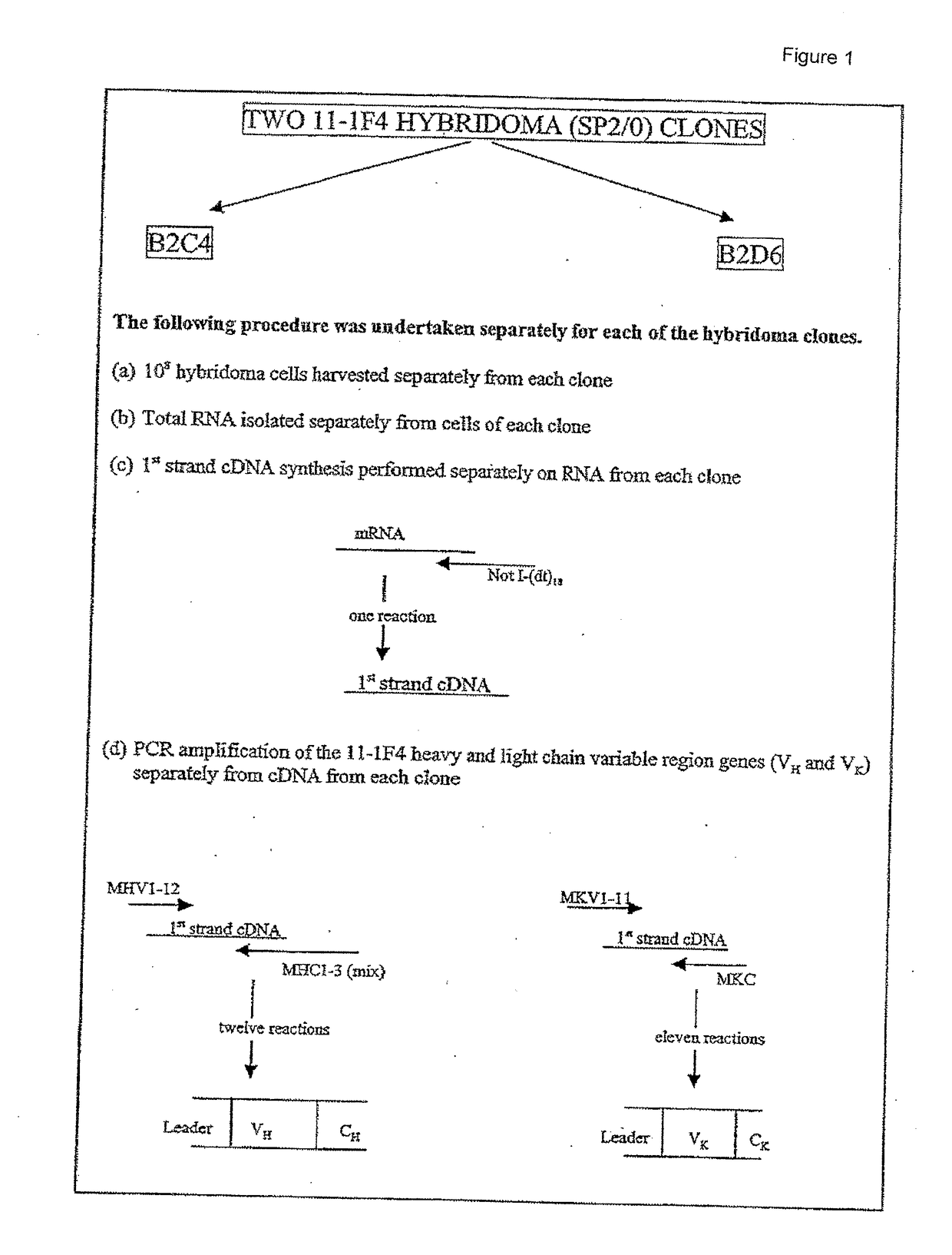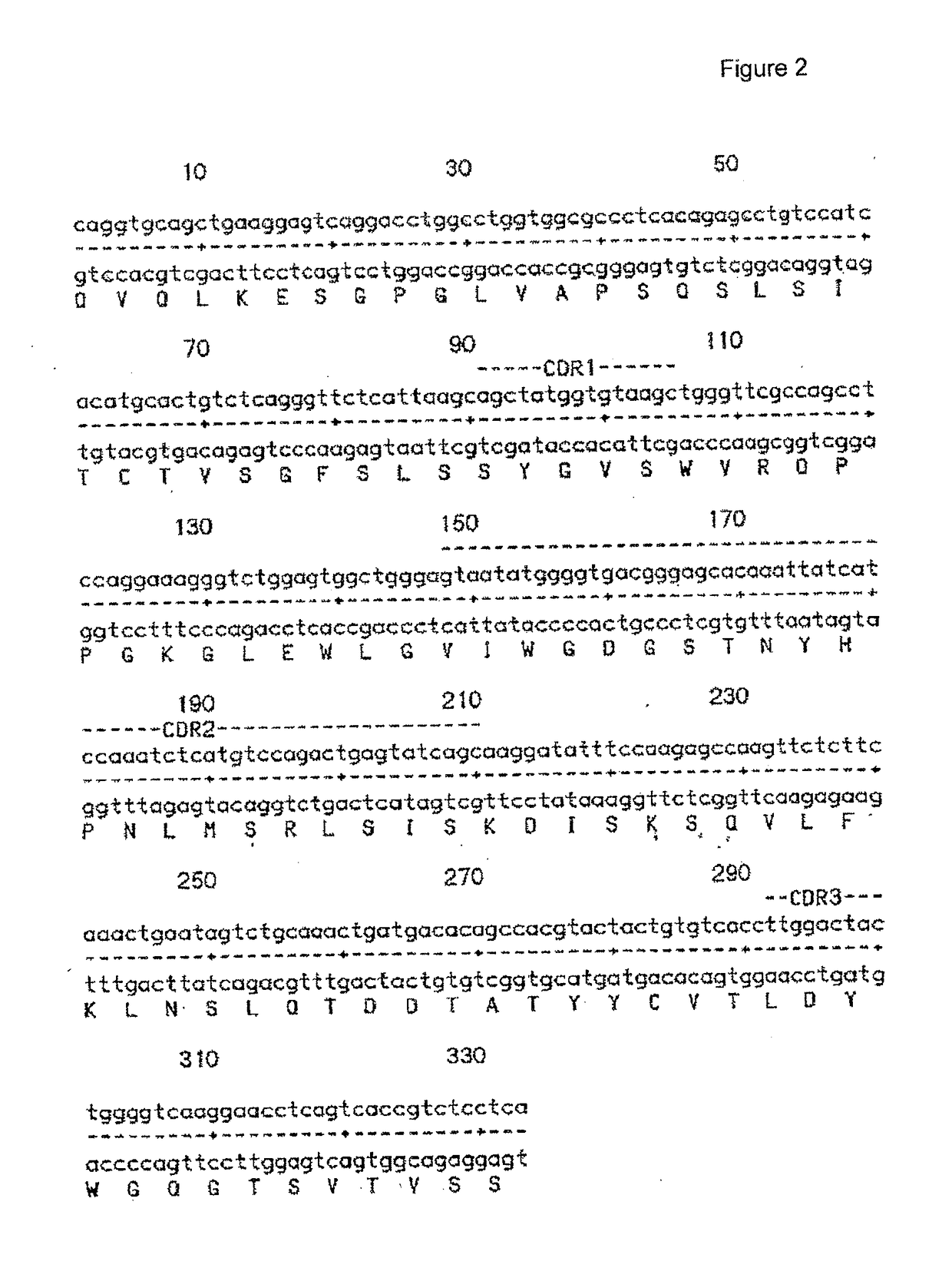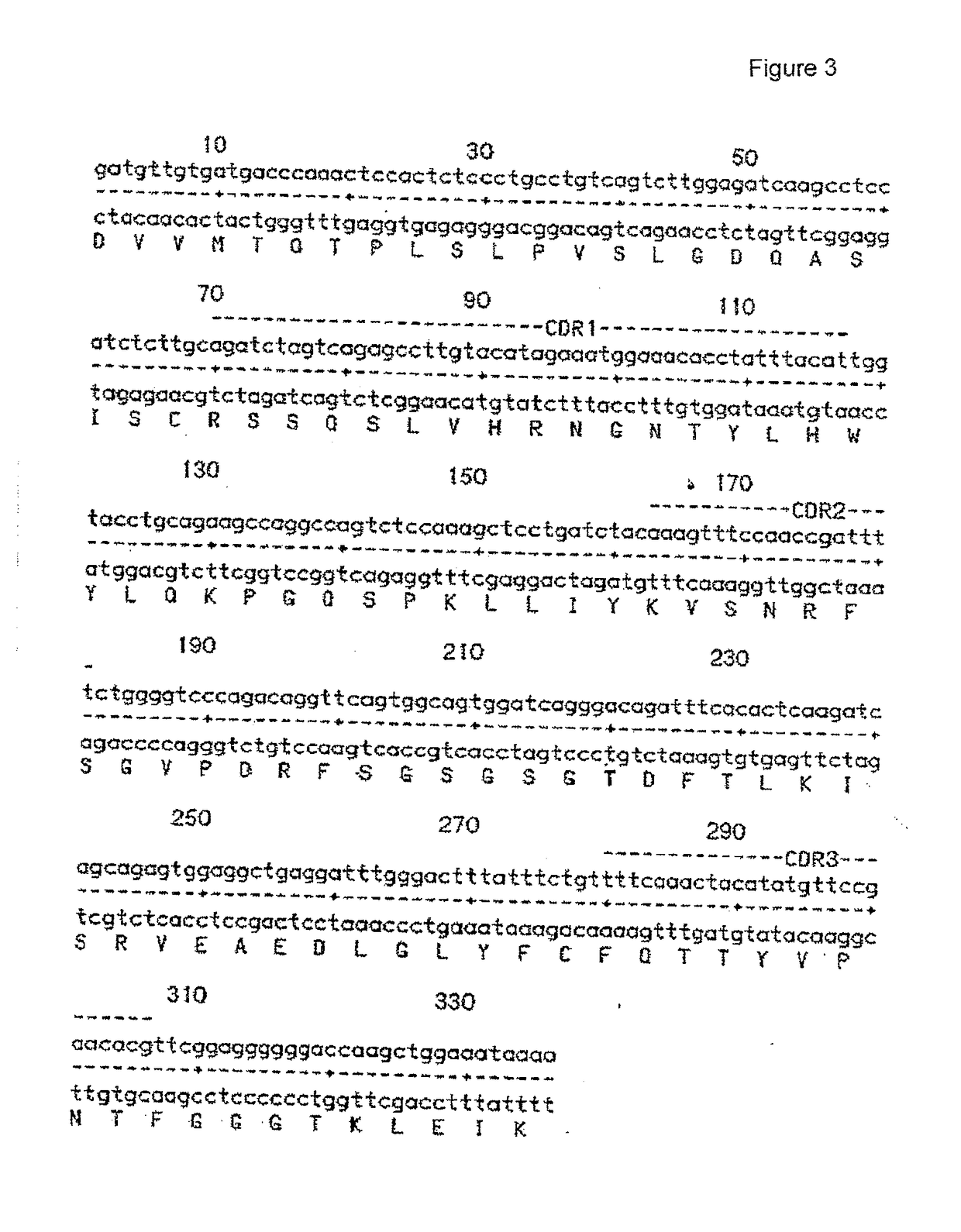Methods and compositions for treatment of amyloid deposition diseases
a technology for amyloid deposition and composition, applied in the field of humanized and chimeric (e. g., mousehuman) antibodies and antigen-binding fragments, can solve the problems of affecting the prognosis of al patients, unable to undertake treatment, and asymptomatic fibrillar deposits, etc., to achieve the effect of reducing nt-probnp, improving gls, and reducing dose proportionally or increasing
- Summary
- Abstract
- Description
- Claims
- Application Information
AI Technical Summary
Benefits of technology
Problems solved by technology
Method used
Image
Examples
example 1
[0169]PCR Cloning and DNA Sequencing of the Mouse 11-1F4 Antibody
[0170]The murine 11-1F4 monoclonal antibody heavy and light chain variable region genes were PCR cloned and a detailed sequence analysis of all variable region genes isolated (both pseudo and functional) was performed. Detailed DNA and amino acid sequences of the murine 11-1F4 antibody heavy and light chain variable region genes were obtained.
Materials
[0171]Media components and all other tissue culture materials were obtained from Life Technologies (UK). The RNA solution kit was obtained from Stratagene (USA), while the first strand cDNA synthesis kit was purchased from Pharmacia (UK). All the constituents and equipment for the RCR-reaction, including AmpliTaq® DNA polymerase, were purchased from Perkin Elmer (USA). The TOPO TA Cloning® kit was obtained from Invitrogen (USA). Agarose (UltraPure™) was obtained from Life Technologies (UK). The ABI PRISM® Big Dye™ terminator cycle sequencing ready reaction kit pre-mixed c...
example 2
[0201]Construction of Chimeric Mouse-Human 11-1F4 (c11-1F4) Antibody
[0202]In order to allow transient expression of the 11-1F4 VH and VK variable region genes described above in mammalian cells as part of a chimeric mouse-human antibody, it was necessary to modify the 5′- and 3′-ends using specifically designed PCR primers (Table 5). The oligonucleotide primers F39836 and F39837 were used to PCR modify the 11-1F4 VK gene, while primers F39835 and F58933 were used to PCR modify the 11-1F4 VH gene. The back (BAK) primers F39836 and F39835 introduced a HindIII restriction site, a Kozak translation initiation site, and an immunoglobulin leader sequence to the 5′ ends of the VK and VH genes respectively. The forward (FOR) oligonucleotide primer F39837 introduced a splice donor site and a BamHI restriction site to the 3′ end of the VK gene while the forward (FOR) oligonucleotide primer F58933 appended the first 22 base pairs of the gamma-1CH1 gene including an ApaI restriction site to the...
example 3
Construction of a Single Supervector for Transient Expression of Chimeric 11-1F4 in COS Cells.
[0210]A single supervector expressing both immunoglobulin chains of the chimeric 11-1F4 antibody was constructed as follows. The 11-1F4 kappa light chain expression cassette (which contained the HCMVi promoter, the 11-1F4 kappa light chain variable region gene, and the kappa light chain constant region gene) was restriction enzyme digested (EcoRI at positions 1 and 2490) out of the 11-1F4VK.pKN100 construct (FIG. 4) and subsequently ligated into the 11-1F4VHpG1D200 construct via the unique EcoRI (position 4297, FIG. 5). This ligation resulted in the construction of a supervector construct, pG1KD200-11-1F4, containing both the heavy and kappa light chains of the 11-1F4 chimeric antibody.
PUM
| Property | Measurement | Unit |
|---|---|---|
| Fraction | aaaaa | aaaaa |
| Fraction | aaaaa | aaaaa |
| Time | aaaaa | aaaaa |
Abstract
Description
Claims
Application Information
 Login to View More
Login to View More - R&D
- Intellectual Property
- Life Sciences
- Materials
- Tech Scout
- Unparalleled Data Quality
- Higher Quality Content
- 60% Fewer Hallucinations
Browse by: Latest US Patents, China's latest patents, Technical Efficacy Thesaurus, Application Domain, Technology Topic, Popular Technical Reports.
© 2025 PatSnap. All rights reserved.Legal|Privacy policy|Modern Slavery Act Transparency Statement|Sitemap|About US| Contact US: help@patsnap.com



